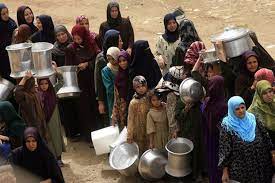
UNESCO and UN-Water have released the World Water Report 2025, highlighting alarming evidence of glacier melt due to climate change. The report warns of devastating consequences, particularly for both developed and underprivileged nations.
According to the findings, 72% of the world’s freshwater is used for agriculture, while 15% is consumed by industries and 13% for domestic use. Between 2020 and 2021, water extraction exceeded normal levels by 14%, with urban areas consuming significantly more than rural regions.
Alarmingly, over 4 billion people—more than half the world’s population—face water shortages. The report predicts that climate change will exacerbate water scarcity through increased pollution, land degradation, ecosystem disruptions, and natural disasters.
Pakistan’s geography makes it highly susceptible to climate change. Over 50% of the country is mountainous, 10% is desert, and only 40% consists of plains, which rely heavily on canal irrigation. Water shortages are expected to have severe repercussions on agriculture.
The country is home to over 7,000 glaciers, but in the last 20 years, 10-12% of their mass has been lost, with around 30 glaciers turning into lakes. This phenomenon increases the risk of catastrophic flooding in mountainous regions, causing water shortages, environmental degradation, and economic instability.
Also Read: Legendary Pashto Comedian Miraawas Passes Away After Prolonged Illness
Adding to the challenge, forest cover in these mountains is below 5%, making them even more vulnerable to climate change. Wildfires and deforestation are becoming more frequent, while reforestation efforts have failed to increase forest area.
The report highlights that the United Nations' Sustainable Development Goal (SDG) 6, aimed at ensuring universal access to clean water and sanitation by 2030, is now unlikely to be achieved.
The Himalayas, Karakoram, and Hindu Kush form the "Third Pole," providing water to South Asia. In 2000, agriculture consumed 67% of the region’s available water, equivalent to 2,400 sq km. By 2022, this usage increased to 72%, reaching 2,800 sq km. However, with glaciers melting rapidly, water availability is expected to decline further, leading to intensified floods and economic instability.
Moreover, 153 countries globally share transboundary rivers, including Pakistan, which depends on shared water sources with India and Afghanistan. The report warns that water disputes between nations are likely to escalate, exacerbating regional tensions.
The report outlines crucial steps Pakistan must take to address the crisis:
Additionally, Pakistan must review and amend its climate policies and related laws, ensuring rapid implementation to combat the looming water crisis.